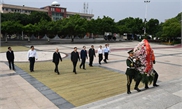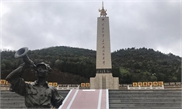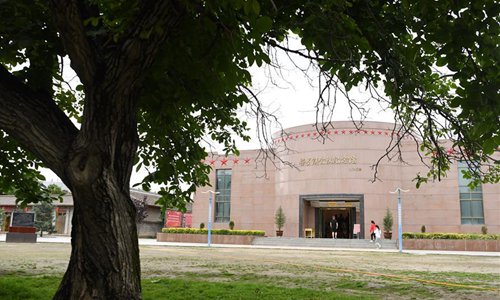
Tourists visit an exhibition hall commemorating a meeting during the Long March in Bangluo Township of Tongwei County, northwest China's Gansu Province, July 24, 2019. Memorial halls and martyrs' cemeteries are springing up in many revolutionary places over the past few years, especially those along the Long March route. In mid-October 1934, the Red Army soldiers launched the most epic military maneuver in China's modern history -- the Long March. The Red Army marched through raging rivers, snowy mountains and arid grasslands to break the Kuomintang regime's grip on the country and to continue their fight against Japanese invaders. Some of them marched as far as 12,500 kilometers, enduring hunger, thirst and cold. (Xinhua/Ma Ning)

Tourists visit an exhibition hall commemorating the Long March in Huining, northwest China's Gansu Province, July 22, 2019. Memorial halls and martyrs' cemeteries are springing up in many revolutionary places over the past few years, especially those along the Long March route. In mid-October 1934, the Red Army soldiers launched the most epic military maneuver in China's modern history -- the Long March. The Red Army marched through raging rivers, snowy mountains and arid grasslands to break the Kuomintang regime's grip on the country and to continue their fight against Japanese invaders. Some of them marched as far as 12,500 kilometers, enduring hunger, thirst and cold. (Xinhua/Ma Ning)
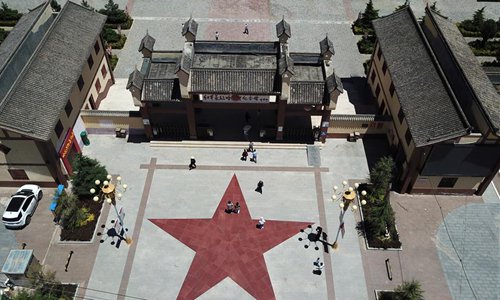
Aerial photo taken on July 26, 2019 shows tourists visiting an exhibition hall commemorating the Long March in Hadapu, northwest China's Gansu Province. Memorial halls and martyrs' cemeteries are springing up in many revolutionary places over the past few years, especially those along the Long March route. In mid-October 1934, the Red Army soldiers launched the most epic military maneuver in China's modern history -- the Long March. The Red Army marched through raging rivers, snowy mountains and arid grasslands to break the Kuomintang regime's grip on the country and to continue their fight against Japanese invaders. Some of them marched as far as 12,500 kilometers, enduring hunger, thirst and cold. (Xinhua/Ma Ning)

Tourists visit an exhibition hall commemorating the Long March in Hadapu, northwest China's Gansu Province, July 26, 2019. Memorial halls and martyrs' cemeteries are springing up in many revolutionary places over the past few years, especially those along the Long March route. In mid-October 1934, the Red Army soldiers launched the most epic military maneuver in China's modern history -- the Long March. The Red Army marched through raging rivers, snowy mountains and arid grasslands to break the Kuomintang regime's grip on the country and to continue their fight against Japanese invaders. Some of them marched as far as 12,500 kilometers, enduring hunger, thirst and cold. (Xinhua/Ma Ning)
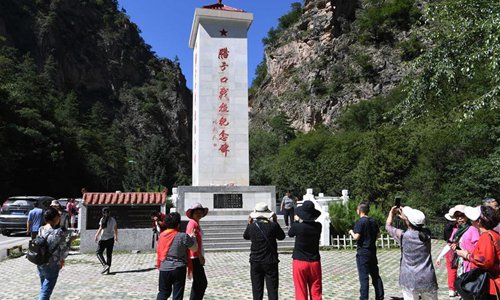
Tourists visit a monument commemorating the Lazikou Battle during the Long March in Diebu, northwest China's Gansu Province, July 26, 2019. Memorial halls and martyrs' cemeteries are springing up in many revolutionary places over the past few years, especially those along the Long March route. In mid-October 1934, the Red Army soldiers launched the most epic military maneuver in China's modern history -- the Long March. The Red Army marched through raging rivers, snowy mountains and arid grasslands to break the Kuomintang regime's grip on the country and to continue their fight against Japanese invaders. Some of them marched as far as 12,500 kilometers, enduring hunger, thirst and cold. (Xinhua/Ma Ning)
